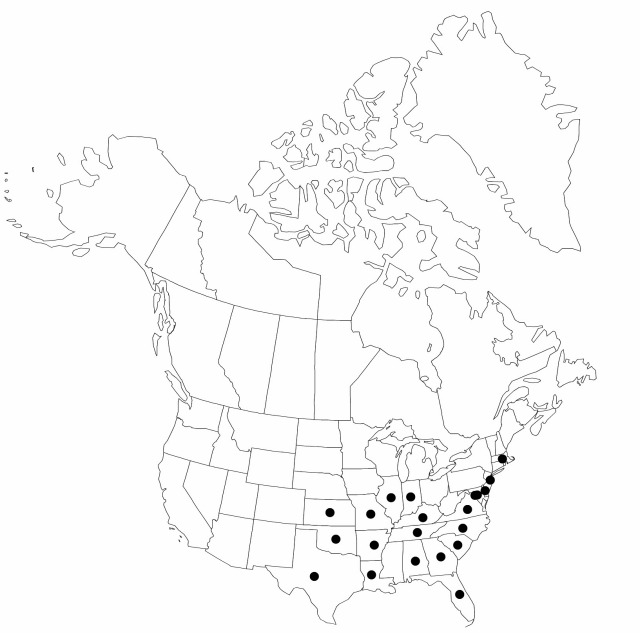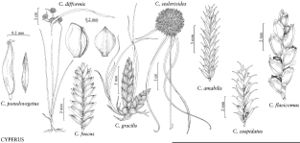Difference between revisions of "Cyperus pseudovegetus"
Syn. Pl. Glumac. 2: 24. 1855.
imported>Volume Importer |
imported>Volume Importer |
||
| Line 57: | Line 57: | ||
|publication year=1855 | |publication year=1855 | ||
|special status=W1;Illustrated;Endemic | |special status=W1;Illustrated;Endemic | ||
| − | |source xml=https:// | + | |source xml=https://bitbucket.org/aafc-mbb/fna-data-curation/src/2e0870ddd59836b60bcf96646a41e87ea5a5943a/coarse_grained_fna_xml/V23/V23_242.xml |
|genus=Cyperus | |genus=Cyperus | ||
|subgenus=Cyperus subg. Pycnostachys | |subgenus=Cyperus subg. Pycnostachys | ||
Latest revision as of 20:39, 5 November 2020
Herbs, perennial, cespitose; rhizomes upright, 5–8 mm diam., indurate. Culms trigonous, 30–50(–80) cm × 1.8–2.5 mm, glabrous. Leaves 4–7(–10), V-shaped, (20–)40–60 cm × 4.5–8 mm. Inflorescences: heads dense, hemispheric, 7–15(–18) mm diam; or if rays absent, heads dense, irregularly lobate, 2–3.5 cm diam.; rays 3–6, 1–30 mm; 2d order rays infrequently present, to 5 mm; bracts (5–)10–15(–40), horizontal to ascending at 30(–45)°, V-shaped, 6–30(–40) cm × 5–8(–10) mm. Spikelets 40–100, greenish white, flattened, ovoid, 3.5–5 × 3–4 mm; floral scales (8–)12–16, uniformly light greenish to light brown, laterally 1-ribbed, medially indistinctly 3-ribbed, basally 2-keeled, oblong-spatulate, widest at or above median, 2–2.5 × (0.7–)1–1.2 mm, apex minutely mucronate, scabridulous, infrequently glabrous. Flowers: stamen 1; anthers oblong, 0.7–1 mm, connective apex subulate, prolonged 0.1–0.2 mm; styles thick, confluent with apex of, and persistent on, achene, 0.5–0.8 mm; stigmas 0.6–1 mm. Achenes brown, stipitate, linear, slightly curved, 1.2–1.4 × 0.2(–0.3) mm, base whitish, stipe spongy, 0.1–0.2 × 0.2 mm, apex acute, surfaces papillose.
Phenology: Fruiting summer.
Habitat: Damp places
Elevation: 0–200 m
Distribution

Ala., Ark., Del., D.C., Fla., Ga., Ill., Ind., Kans., Ky., La., Md., Mass., Mo., N.J., N.C., Okla., S.C., Tenn., Tex., Va.
Discussion
Cyperus pseudovegetus has been called “Cyperus vegetus Willd.” (M. L. Fernald 1950). The var. megalanthus Kükenthal of eastern Mexico and Central America recognized by M. F. Denton (1978b) is now considered a distinct species, C. megalanthus (Kükenthal) G. C. Tucker (see G. C. Tucker 1994).
Cyperus pseudovegetus is introduced in Massachusetts.
Selected References
None.
